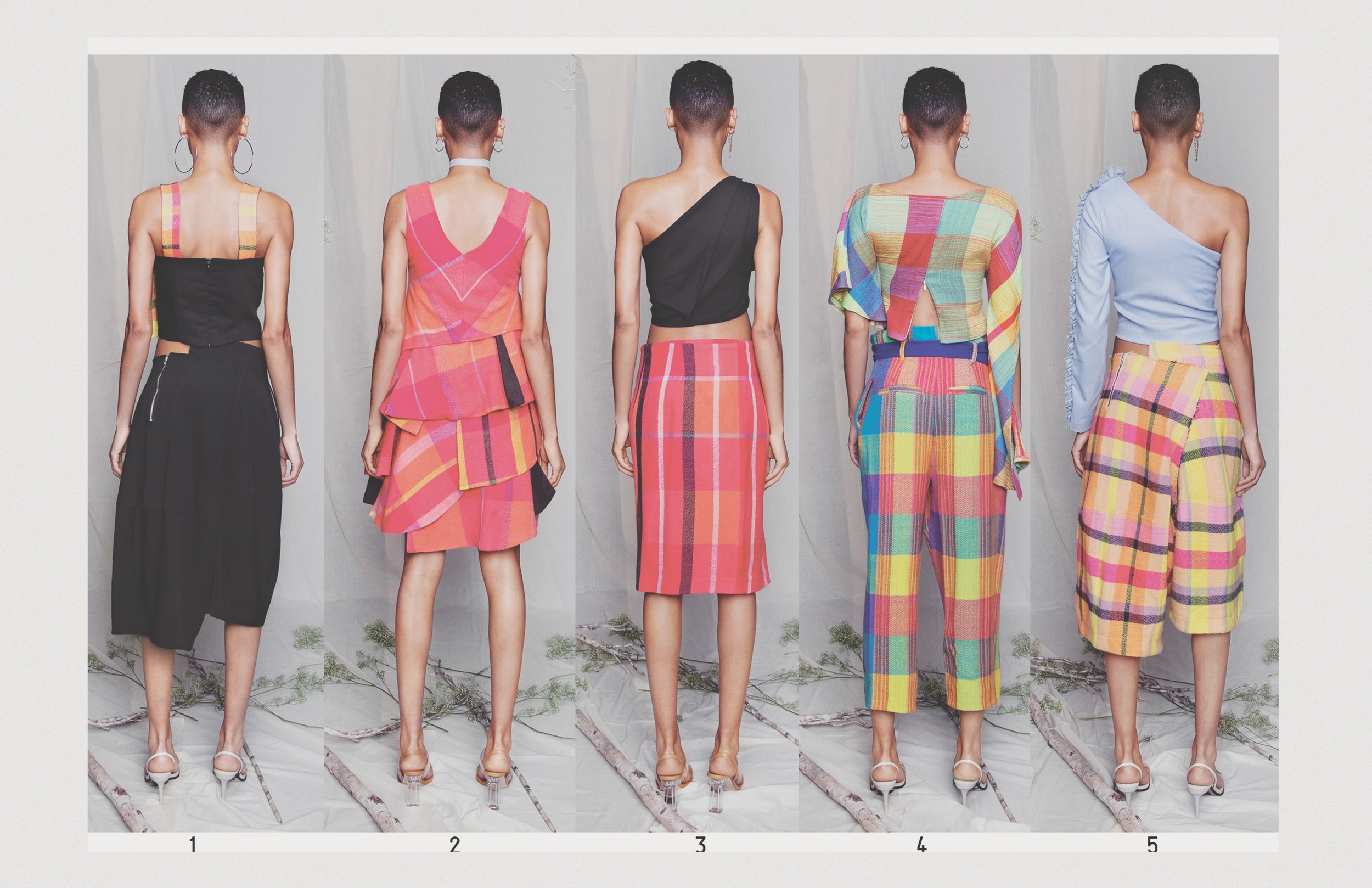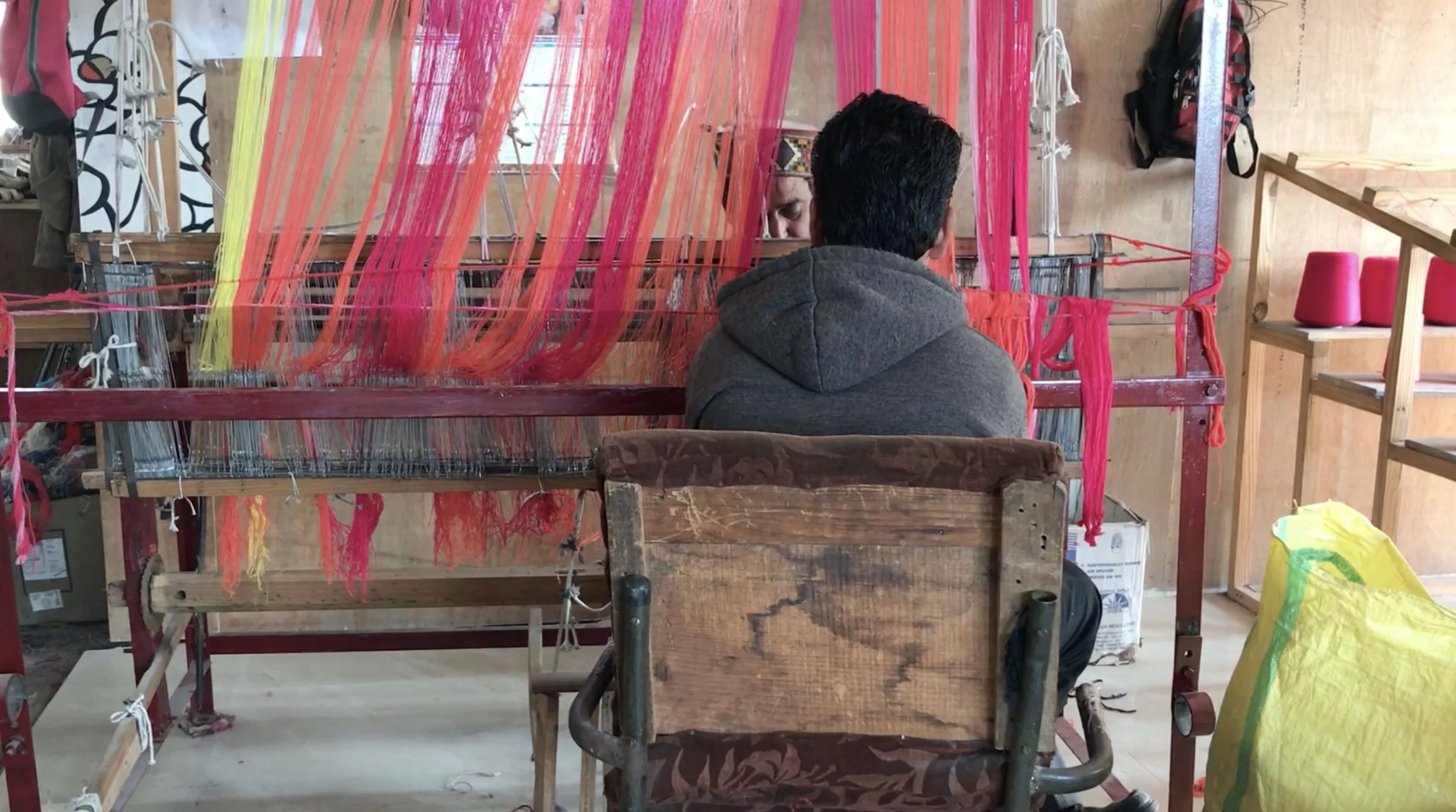inhabitance_process
This project is an homage to the weavers and their stories, connecting the past with the present and future. Handloom and weaving were indigenous weavers who are the original inhabitants of their craft are today threatened to extinction. So how can we reintroduce handwoven textiles and weavers to the modern, contemporary and sustainable world? How can we bring weavers and artisans to the forefront of design?
I wanted to present a forward-thinking collection that visually portrays sustainable urbanism on the holistic traditions and ancient way of life of weavers in rural Kullu, India. As a designer, I believe that fashion and design catalyst social change. This thesis centers on ethnographic and global Artisan Textile projects working to document, promote and preserve international traditional weaving techniques while also exploring my own Indian heritage (through the study of Indian textile and drape).
My collection experimented with zero-waste design and sustainable patternmaking to create tensions in texture, form, coloration, and conceptual subject matter. I visually translated this through textiles, kinetic construction/draping, and abstractly combined silhouettes of contrasting styles. My processes reflect a zero-waste system thinking by exploring theoretical, aesthetic, and technical development of systems and methods for zero waste textile forms, presenting experience using a variety of prototyping for a new understanding of the relationship between design and system, textile and form. While the average making and weaving process for a single fabric takes several days, it is essential to be conscious as designers to find a less exploitative and wasteful method in construction that is sustainable and mindful for human labor.
Please scroll below to see the process





Hand weaving is a precise manually weaving technique and the motion of the handloom is operated by skilled human hands without use of any source of energy like electricity. The longitudinal threads are called 'warp' and the lateral threads 'weft' are interlaced to create soft vibrant fabrics.
Documentary
“ This is documentation of the weavers and the making process. The process seems tedious yet is sacred to their community and culture. With the advancement of technology and power looms, traditional crafts and handlooms are fading and being replaced.
Their story is important. Designers need to work together to uplift and revive the ancient craft of India placing the weaver at the forefront to design. Every yarn is carefully hand-dyed, spun, and woven to become a textile and tangible being.
The most coverage of the handloom and crafts sector runs under two clichés. Lament or laminate. The former is mounted on loss, the decline of handlooms or rural clusters exploited by international brands and powerful designers—one part of the reality but not the entire story. The other is the song and dance about ‘revival’ of techniques and textiles by designers for fashion weeks, international exhibitions, and new urban markets. ‘artisanal’, ‘handmade’, ‘sustainable’ and ‘revival’—— dominate the vocabulary used to get the attention of the urban audience and customer.
The rest? The story of the weavers and the makers of the textile remains in the background. When was the last time we heard about the complicated nature of ‘progress’ in the weaving industry—which means every new weaving machine introduced actually sets back traditional knowledge even as it improves production efficiency.
We need to acknowledge the artisans as more than an anonymous pair of hands.”
Videography, Editing and Clothing by Ritika Ramesh
| Collection woven by weavers in rural Kullu, India



























